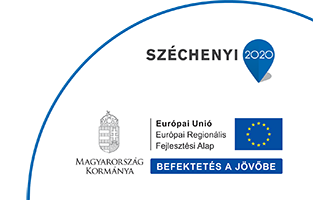1. Introduction
BorsodChem Zrt. (hereinafter as: Company or BC) as a responsible chemical company committed to sustainable development, in order to establish its emission reduction strategy and to follow up the implementation and fulfilment of its sustainability objectives has made a decision to survey and prepare the inventory of its greenhouse gas emissions.
Our Company has prepared its complete voluntary Greenhouse Gas (GHG) Inventory, covering Scope 1, Scope 2 and Scope 3 emission categories, for the first time for the financial year 2021, which was also defined as the base year of the inventory.
We are pleased to present our Greenhouse Gas (GHG) Report containing our 2021 GHG Inventory.
BorsodChem Zrt. is going to publish its GHG Report year by year to inform transparently its investors, customers and other internal and external stakeholders of the Company’s environmental performance and GHG emissions, in accordance with the commitments made in our Sustainability Policy and Strategy. In addition, the Report supports the monitoring, measurement and further development of our GHG reduction projects defined in our Strategy.
The Sustainability Group of BorsodChem Zrt. is responsible for the preparation of BorsodChem Zrt.’s GHG Inventory and GHG Report.
The report has been prepared in accordance with the requirements established in the Greenhouse Gas Protocol “Corporate Accounting and Reporting Standard” and Standard ISO 14064-1:2018 „Greenhouse Gases. Part 1: Specification with guidance at the organization level for quantification and reporting of greenhouse gas emissions and removals”.
The calculation of Scope 3 emissions is based on the Greenhouse Gas Protocol “Corporate Value Chain (Scope 3) Accounting and Reporting Standard” and the World Business Council for Sustainable Development (WBCSD) ”Guidance for Accounting and Reporting Corporate GHG Emissions in the Chemical Sector Value Chain”. The Scope 3 emissions are calculated by category in accordance with the guidelines of the GHG Protocol Standard (at least “minimum boundaries“).
However, the cumulative effects of changes in calculation methodologies, emission factors as well as calculation errors disclosed during the preparation of our GHG Inventory of the year 2023 do not reach the 10% substantial impact defined in our recalculation policy, our Company has decided to recalculate the GHG Inventory for 2021.
Together with our GHG Report 2023, we are publishing the revised, third-party verified version v1 of our GHG inventory of the base year 2021.
The version v0 of our base year GHG Inventory was verified using a „limited assurance” engagement in line with the Greenhouse Gas Protocol “Corporate Accounting and Reporting Standard” and the Greenhouse Gas Protocol “Corporate Value Chain (Scope 3) Accounting and Reporting Standard”, in accordance with ISAE 3410. The recalculated v1 version of the GHG Inventory has been verified by an independent third party according to the MSZ EN ISO 14064-3 standard.
2.Descriptive information
2.1 Description of the Company
BorsodChem Zrt., as member of the Chinese Wanhua Chemical Group, due to its continuous renewal and innovations, is a leading manufacturer of plastic raw materials, organic and inorganic chemicals in Europe. Our products – MDI, TDI, PVC products and special chemicals – provide raw materials for various industries, such as vehicle, building, footwear and clothing, furniture, pharmaceutical and rubber industry.
BorsodChem Zrt.’s headquarters and the centre of its production activities is in Kazincbarcika, Hungary. Our site is located on approximately 450 hectares in the administrative area of Kazincbarcika, Berente and to a lesser extent, Múcsony. In addition, we operate a research and development centre in Gödöllő, Hungary and we manage a part of our commercial activities from our office in Budapest, as well as sales offices, branches and subsidiaries outside Hungary.
2.2 Chosen consolidation approach
BorsodChem Zrt. applies operational control-based consolidation approach for accounting its emissions.
2.3 Organizational boundaries
Management of BorsodChem Zrt. has decided to fully assess the GHG emissions of its facilities operating at its sites in Hungary. Accordingly, organizations included in the GHG Inventory:
- its own facilities located at BorsodChem Zrt.’s sites in Hungary (Kazincbarcika, Berente, Múcsony, Gödöllő, Budapest), and
- the subsidiaries operating in Hungary over which BorsodChem Zrt. has 100% or majority operational control, including activities from the establishment of operational regulations to the implementation of investments, developments and energy efficiency-enhancing projects.
Emissions of offices, branches and subsidiaries operating outside Hungary are not accounted in the GHG Inventory.
Emissions from manufacturing and sale of products generated from BorsodChem Zrt.’s production activities in Hungary are taken into account in our GHG Inventory.
In our GHG inventory, we take into account sources of emissions – facilities, subsidiaries – with emissions exceeding 1% of our total emissions.
2.4 Relevant greenhouse gases
Greenhouse gases considered in the Company’s 2021 GHG Inventory:
- Carbon dioxide (CO2)
- Methane (CH4)
- Dinitrogen-oxide (N2O)
- Hydrofluorocarbon gases (HFC)
- Sulphur-hexafluoride (SF6)
NF3 and perfluorocarbon compounds (PFC-s) are not used at our Company.
2.5 Scope 3 categories included
Our indirect Scope 3 emissions are accounted for in the following categories:
- Category 3.1: Purchased goods and services
- Category 3.2: Capital goods
- Category 3.3: Fuel and energy-related activities
- Category 3.4: Upstream transportation and distribution
- Category 3.5: Waste generated in operations
- Category 3.6: Business travel
- Category 3.7: Employee commuting
- Category 3.9: Downstream transportation and distribution
- Category 3.11: Use of sold products
- Category 3.12: Endof-life treatment of sold products
2.6 Scope 1, Scope 2 and Scope 3 categories excluded
The following categories are excluded from our GHG Inventory:
-
Category 3.8: Upstream leased assets
There are no significant stationary sources of emissions at the sites of BorsodChem Zrt. that are not fully owned by the Company. BorsodChem Zrt. operates leased vehicles and rents external storage capacities. Emissions from the use of leased vehicles are accounted for as Scope 1 emissions. Regarding the emissions from the energy consumption of the rented tanks and warehouses, we do not have data from the lessors, however, according to our experts' estimation, it is not a significant source of emissions (<1%) compared to our total emissions. -
Category 3.10: Processing of sold products
BorsodChem Zrt. mainly produces intermediate products. Due to the large number of users and fields of application, the emissions generated during the processing of the sold products cannot be monitored with a reasonable expenditure, and it does not provide reliable data. Accordingly, following the WBCSD guidance for accounting and reporting Scope 3 emissions which says that “chemical companies are not required to report Scope 3, category 10 emissions, since reliable figures are difficult to obtain, due to the diverse application and customer structure”, we do not report this category. -
Category 3.13: Downstream leased assets
There are also companies at BorsodChem Zrt.'s site in Kazincbarcika that are not directly related to our activities, but rent land and sometimes real estate from our company. Since BorsodChem has no influence on their operation, we do not account for their emissions in this Scope 3 category in our GHG Inventory. -
Category 3.14: Franchises
BorsodChem does not own or operate franchises, so this category is not relevant for us. -
Category 3.15: Investments
BorsodChem has no investments with significant emissions (>1% compared to total emissions).
2.7 Base year
BorsodChem Zrt. has determined the financial year 2021 as the base year of its complete GHG Inventory – covering Scope 1, Scope 2 and Scope 3 emissions – taking into account the following aspects:
Our Company has defined the year 2021 as the base year for following up the results of GHG reduction programs and activities specified in the Action Plan, which is part of our Sustainability Strategy disclosed in 2022.
Due to the pandemic, the year 2020 did not reflect the GHG emissions of normal operating conditions. In 2021, the economic situation and production level stabilized for BorsodChem.
2.8 Base year emissions recalculation policy
The base year emissions are recalculated in the event of any changes that, individually or collectively, have substantial impact on the calculation of the 2021 GHG Inventory defined as baseline.
A change of more than 10% in the base year's total emission is considered substantial.
The base year emissions are recalculated in the event of the following changes:
- In case of structural changes in the organizational boundaries that, individually or collectively, have substantial impact on the base year emissions (e.g. merger, acquisition, sale, outsourcing of activities, relocation).
- In case of changes in the emission categories included in the GHG Inventory.
- In case of substantial changes in emission calculation methodologies.
- In case of improvement in the accuracy of emission factors and activity data, which together have substantial impact on the base year emissions.
- In case a significant calculation error or a number of cumulative errors are discovered that collectively have substantial impact on the base year emissions.
2.9 Changes due to recalculation of the base year inventory
However, the cumulative effects of changes in calculation methodologies, emission factors as well as calculation errors disclosed during the preparation of our GHG Inventory of the year 2023 do not reach the 10% substantial impact defined in our recalculation policy, our Company has decided to recalculate the GHG Inventory for 2021.
Reasons for the changes:
| Emission Category | Justification for the changes |
|
Scope 2 2.1 category: emission from the use of purchased electricity |
changes in the emission factor |
|
Scope 2 2.2 category: emission from the use of purchased steam |
review of the applied expert estimate |
|
Scope 3 3.1 category: purchased goods and services |
improvement accuracy of activity data |
|
Scope 3 3.3 category: fuel and energy-related activities |
disclosed calculation errors, improvement accuracy of activity data |
| Avoided emissions from burning biogas | disclosed calculation errors |

3. GHG emissions data
| Categories | Emissions (tonnes CO2e) v0 |
Emissions (tonnes CO2e) v1 |
Emissions rate in percentage |
| Scope 1: Direct emissions from owned and controlled operations | 563,877 | 563,877 | 15.9% |
| Scope 2: Indirect emissions from the use of purchased electricity and steam, local based | 296,418 | 263,953 | 8.1% |
| Upstream Scope 3 emissions | |||
| 3.1: Purchased goods and services | 1,568,018 | 1,590,617 | 48.80% |
| 3.2: Capital goods | 65,179 | 65,179 | 2.00% |
| 3.3: Fuel- and energy-related activities | 424,481 | 150,909 | 4.63% |
| 3.4: Upstream transportation and distribution | 53,766 | 53,766 | 1.65% |
| 3.5: Waste generated in operations | 6,526 | 6,526 | 0.20% |
| 3.6: Business travel | 9 | 9 | 0.0003% |
| 3.7: Employee commuting | 3,770 | 3,770 | 0.12% |
| Downstream Scope 3 emissions | |||
| 3.9: Downstream transportation and distribution | 94,627 | 94,627 | 2.90% |
| 3.11: Use of sold products | 1,833 | 1,833 | 0.06% |
| 3.12: End-of-life treatment of sold products | 464,722 | 464,722 | 14.26% |
| Scope 3 (upstream + downstream) emissions | 2,682,931 | 2,431,958 | 74.6% |
| Total GHG (Scope 1+2+3) emissions | 3,543,226 | 3,259,787 | 100% |
| GHG emissions |
Carbon dioxide | Methane[1] | ||
| tonnes CO2 | tonnes CO2e | tonnes CH4 | tonnes CO2e | |
| Scope 1[2] | 525,135 | 525,135 | - | - |
| Scope 2 | 263,953 | 263,953 | - | - |
[1]Methane: Methane is generated during the waste and wastewater treatment activities of our company. Biogas with a high methane content generated in our wastewater treatment activity is burnt and recycled as heat. Thus, direct methane emissions from the activity are not typical. The amount of methane produced during the decomposition of waste placed in landfills is negligible.
| GHG emissions |
Nitrogen-oxide | HFCs | ||
| tonnes CO2 | tonnes CO2e | tonnes CH4 | tonnes CO2e | |
| Scope 1[2] | 70 | 20,975 | 11.73 | 17,285 |
| Scope 2 | - | - | - | - |
| GHG emissions |
Sulphur-hexafluoride | |
| tonnes SF6 | tonnes CO2e | |
| Scope 1[2] | 0.02 | 481 |
| Scope 2 | - | - |
[2]N2O, CH4, HFC and SF6 emissions were converted to CO2 equivalents using Global Warming Potential (GWP) values applicable according to the current regulations for official reports. In the absence of official regulations (methane), we used the more recent value.
|
GHG |
GWP |
Data source |
| CH4 | 28 | IPCC Fifth Assessment Report, 2014 |
| N2O | 298 | IPCC Fourth Assessment Report, 2007 |
| HFCs* | 1,473 | IPCC Fourth Assessment Report, 2007 |
| SF6 | 22,800 | IPCC Fourth Assessment Report, 2007 |
*Weighted GWP calculated from the individual GWP values of the given refrigerants.

4. Biogenic CO2 emissions
Emissions from burning biogas: 1,012 tonnes CO2e.
5. Avoided emissions
Our avoided emissions from burning biogas: 8,878 tonnes CO2e.
6. Description of methodologies, data sources
